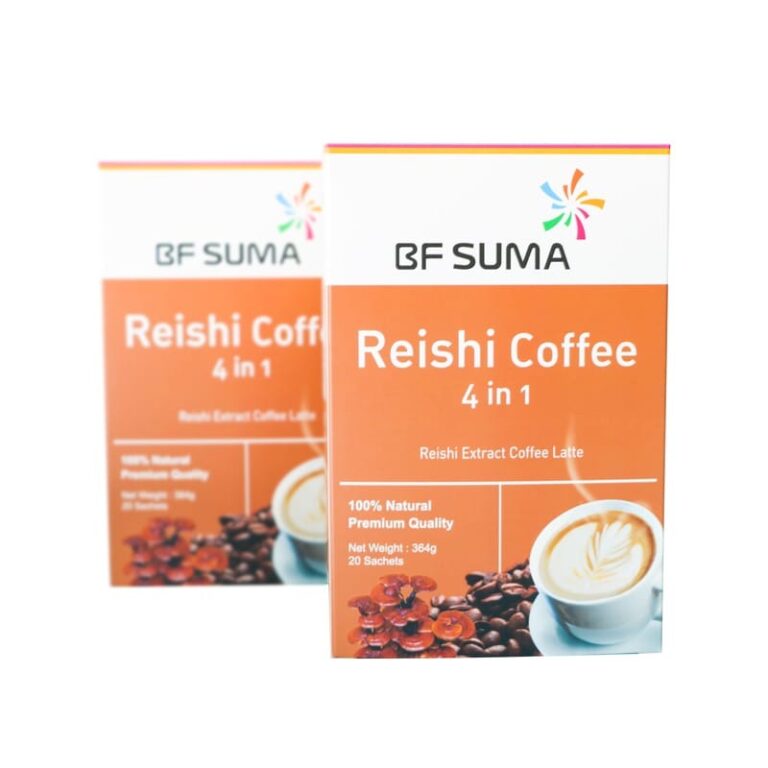Does Chitosan Cause An Allergic Reaction?
Chitosan is a chemical by-product of crustaceans and it is used to treat arterial plaque. There are no reports of immediate-type allergic reactions to chitosan.
However scientists who have conducted study said that chitosan can cause allergic reactions in some people due to its high protein content. They advised people with allergies to crustaceans to avoid chitosan supplements.
If you are considering taking a chitosan supplement, it is important to consult with your doctor first. If you have any allergies, he or she can advise you on whether or not chitosan is the right supplement for you.
Is Chitosan Water Soluble?
Chitosan contains an amino group, making it a base that combines with carbonic acid (eq 2) to generate a cation (eq 3). This chitosan cation is soluble in water.
This means that it can dissolve in water and is able to bind to dietary fats and cholesterol. Chitosan can help to reduce the absorption of dietary fats and cholesterol, which can help to reduce the risk of developing heart disease and other health conditions.
Is Chitosan Vegan?
💥🎁 Christmas & Year-End Deals On Amazon !
Don't miss out on the best discounts and top-rated products available right now!
🛒 Shop Now & Save Big Today!*As an Amazon Associate, I earn from qualifying purchases.
The majority of Chitosan used in wine fining is derived from shrimp shells. Even though chitosan made from shrimp is hypoallergenic, many individuals prefer a vegan option. This vegan Chitosan is derived from the Aspergillus Niger fungus.
Some vegans avoid chitosan because it is made from shellfish. However, chitosan is a complex carbohydrate and is not produced from the flesh of shellfish. Chitosan may also contain minerals like potassium, magnesium and calcium.
Is Chitin And Chitosan The Same?
Both chitin and chitosan are polysaccharide-based substances. Chitin is a glucose amide derivative, whereas Chitosan is a linear polysaccharide. The primary distinction between chitin and chitosan is that chitin does not contain free amine groups, but chitosan does.
Chitosan has many of the same properties as chitin, such as being a good source of fibre, and is often used in the same applications, such as wound healing and agriculture.
However, chitosan has been shown to be more effective than chitin, due to its ability to bind to proteins and other molecules.
What Is Tianshi Chitosan Capsules?
Tiens Chitosan is a substance that promotes slimming diets efficiently. Due to its exceptional ability to bind fat particles, it minimizes the calorie content of the meal. On the other hand, by expanding in the stomach, it satisfies it and so eliminates hunger.
💥🎁 Christmas & Year-End Deals On Amazon !
Don't miss out on the best discounts and top-rated products available right now!
🛒 Shop Now & Save Big Today!*As an Amazon Associate, I earn from qualifying purchases.
Tianshi chitosan capsules are a dietary supplement made of chitosan, a natural fibre derived from the shells of crabs, shrimps, and other crustaceans.
Chitosan is a type of fibre that is not absorbed by the body, but instead passes through the digestive system unchanged. Because of this, chitosan is thought to help reduce cholesterol levels and promote weight loss.
Is Chitosan Non-Toxic?
Due to their non-toxicity, low pathogenicity, biocompatibility, and biodegradability, chitosan are widely acknowledged as being among the most varied of all biomaterials.
Chitosan is generally considered to be non-toxic because it is a natural substance. Although some animal and human studies have been conducted, chitosan has not been shown to cause any major side effects.
Who Discovered Chitosan?
In the year 1811, the French professor Henri Braconnot was the one who discovered chitosan and made the observation that it was present in mushrooms.
After that, other inquiries have been effectively done by a large number of scientists up to this point in the 20th century.
Is Chitosan A Nanoparticle?
💥🎁 Christmas & Year-End Deals On Amazon !
Don't miss out on the best discounts and top-rated products available right now!
🛒 Shop Now & Save Big Today!*As an Amazon Associate, I earn from qualifying purchases.
Chitosan can be made into polymeric nanoparticles for a variety of uses in oral medication delivery. Chitosan is made of chitin, a type of long-chain polysaccharide found in the shells of crustaceans and insects.
Chitosan is a versatile material that has been used in a wide range of applications, from medical devices to water filters. It is also being explored as a potential carrier for drugs and other therapeutic agents.
Thanks to its small size, chitosan can circulate in the body for longer periods of time than larger particles, making it a potentially useful tool for targeted drug delivery.
What Type Of Polymer Is Chitosan?
Chitosan is a copolymer that is made up of the components N-acetyl-D-glucose amine and D-glucose amine. It is a polymer that is linear and semi crystalline.
Chitosan is a polymer that is derived from chitin, a structural component of the shells of shrimp, crabs, and other crustaceans.
It is a natural, biodegradable, and biocompatible material that has a range of applications in medical and industrial settings.
💥🎁 Christmas & Year-End Deals On Amazon !
Don't miss out on the best discounts and top-rated products available right now!
🛒 Shop Now & Save Big Today!*As an Amazon Associate, I earn from qualifying purchases.
Chitosan has been shown to possess antimicrobial, anti-inflammatory, and antitumor properties, and it is also used as a drug delivery vehicle and blood coagulant.
In addition, chitosan can be used to produce biodegradable plastics, adhesives, and other composites.
What Drugs Contain Nanoparticles?
Using nanomaterials, a number of anti-cancer medications, including paclitaxel, doxorubicin, 5-fluorouracil, and dexamethasone, have been effectively produced.
There is a growing interest in drug delivery systems that use nanoparticles (NP), due to their unique physicochemical and biological properties.
NP can be used to improve the solubility, stability, and bioavailability of drugs, and can also be used to target specific tissues or organs.
A number of drugs currently on the market contain NP, including anticancer agents, prodrugs, and contrast agents used in computed tomography (CT) scans.
💥🎁 Christmas & Year-End Deals On Amazon !
Don't miss out on the best discounts and top-rated products available right now!
🛒 Shop Now & Save Big Today!*As an Amazon Associate, I earn from qualifying purchases.
Examples of drugs that contain NP include paclitaxel (Taxol), sunitinib malate (Sutent), and iohexol (Omnipaque).
Paclitaxel (Taxol) is a chemotherapy drug that is used to treat a number of cancers, including ovarian, breast, and lung cancer.
Paclitaxel is a water-insoluble drug, which can cause gastrointestinal side effects such as nausea and vomiting.
It was previously thought that paclitaxel could not be given orally because it is not absorbed by the gastrointestinal tract. However, it has been shown that paclitaxel can be delivered orally using NP as a carrier.
Sunitinib malate (Sutent) is a drug that is used to treat a number of cancers, including renal cell carcinoma, pancreatic cancer, and gastrointestinal stromal tumor. Sunitinib is a water-insoluble drug, which can cause gastrointestinal side effects such as nausea and vomiting.
Sunitinib can be given orally using NP as a carrier, which improves the absorption of the drug and reduces the incidence of gastrointestinal side effects.
💥🎁 Christmas & Year-End Deals On Amazon !
Don't miss out on the best discounts and top-rated products available right now!
🛒 Shop Now & Save Big Today!*As an Amazon Associate, I earn from qualifying purchases.
Iohexol (Omnipaque) is a contrast agent that is used in CT scans to improve the visualization of tissues and organs. Iohexol is a water-soluble drug, which reduces the risk of adverse reactions such as nausea and vomiting.
Iohexol can be delivered intravenously using NP as a carrier, which improves the absorption of the drug and reduces the incidence of adverse reactions.
Is Chitosan A Biopolymer?
Chitosan is a natural biopolymer that is derived from crab shells. It is notable for its biocompatibility, biodegradability, and bioactivity. Chitosan may be found in crab shells.
Chitosan is a biopolymer derived from the chitin molecule, which is found in the exoskeleton of crabs, shrimp, and other crustaceans.
Chitosan is produced commercially by treating the chitin with an acidic or alkaline solution. This produces a white, water-soluble powder that is often used as a dietary supplement or a food additive.
Chitosan is a versatile biopolymer with a number of potential applications. It has been used as a dietary supplement to promote weight loss and reduce cholesterol levels.
💥🎁 Christmas & Year-End Deals On Amazon !
Don't miss out on the best discounts and top-rated products available right now!
🛒 Shop Now & Save Big Today!*As an Amazon Associate, I earn from qualifying purchases.
Chitosan can also be used as a food additive to improve the texture and stability of food products. In addition, chitosan has been investigated as a treatment for a variety of medical conditions, including diabetes, cancer, and heart disease.
Is Chitosan A Monomer?
Chitosan is a semisynthetic material that is acquired by deacetylation of chitin. It is composed of glucosamine (a deacetylated monomer) and N-acetyl-glucosamine (an acetylated monomer) monomers interconnected through -, 4 glycosidic bonds. Chitin is the starting material for the production of chitosan.

